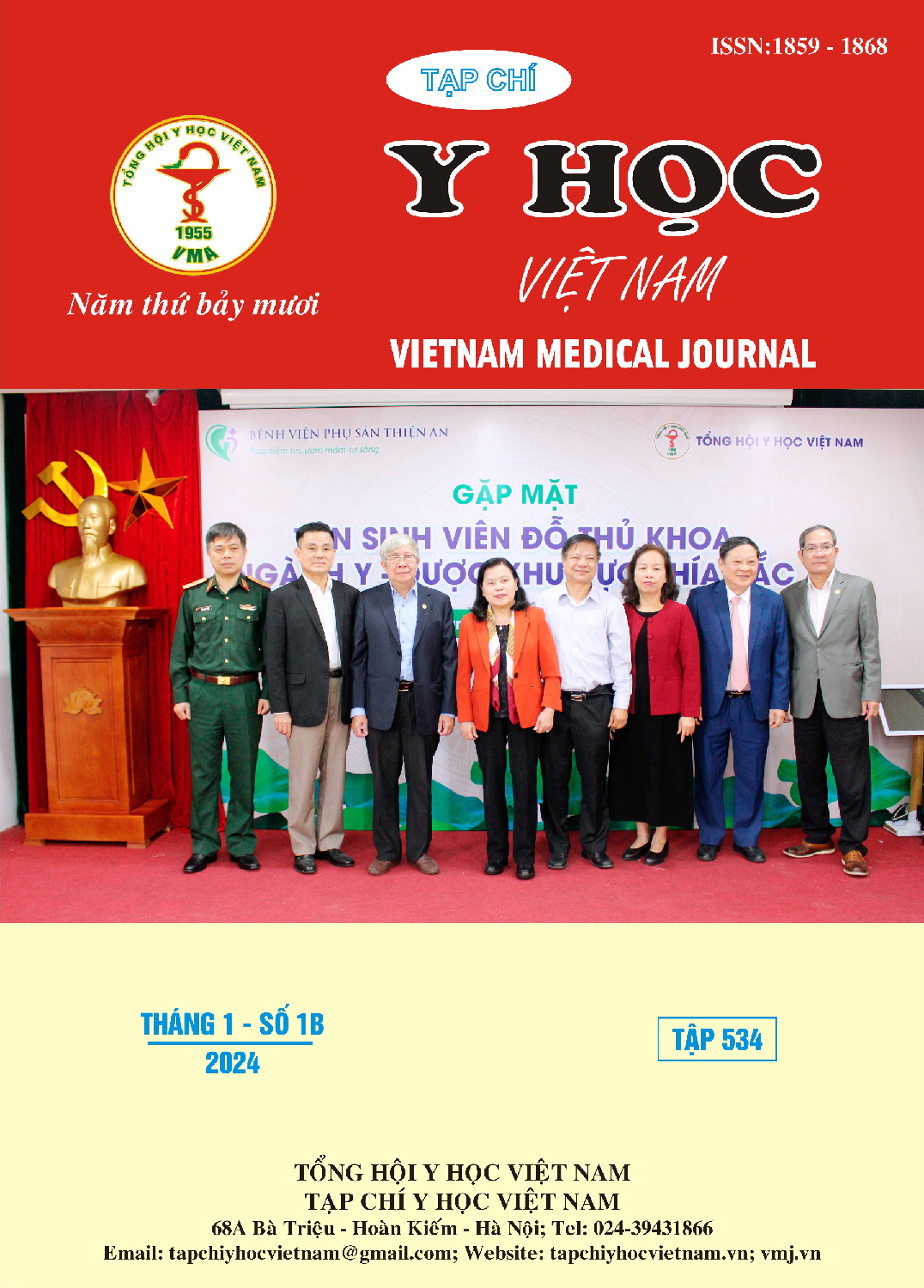THE ROLE OF P16/KI-67 DUAL STAINING IN CERVICAL CANCER SCREENING
Main Article Content
Abstract
Cervical cancer screening programs have helped reduce cervical cancer incidence and mortality. Currently, cervical cancer screening programs worldwide are shifting from cytology screening to HPV DNA testing. Although HPV DNA testing provides high sensitivity and negative predictive value, its specificity for precancerous lesions and cervical cancer is limited. The majority of HPV infections are transient and do not cause precancerous lesions and cervical cancer, so effective triage methods are needed to reduce the number of unnecessary colposcopy cases. Many recent studies have demonstrated that the dual staining cytology method with the combination of 2 biomarkers p16/Ki-67 has higher sensitivity and specificity values for detecting CIN2+ and CIN3+ than HPV testing. P16 is a tumor suppressor protein and Ki-67 is a cell proliferation marker. Normal cells will not express both p16 and Ki-67 at the same time. P16/Ki67 dual staining was approved by the United States Food and Drug Administration (US FDA) in 2020 for the triage of HPV positive women, either in primary HPV screening or HPV/cytology co-testing. In this review, we discuss the significance of p16/Ki-67 dual-staining and summarize the application basic of dual staining in screening and classifying cervical precancerous lesions.
Article Details
References
2. Nicolas Wentzensen, Barbara Fetterman, Philip E. Castle, et al (2015), p16/Ki-67 dual stain cytology for detection of cervical precancer in HPV-positive women. Natl Cancer Inst.107(12), 257.
3. Andraž Dovnik, Alenka Repše Fokter (2023), The Role of p16/Ki67 Dual Staining in Cervical Cancer Screening. Curr Issues Mol Biol.45(10), 8476-8491.
4. Phạm Thị Mây, Lê Trung Thọ, Lê Hoài Chương, et al (2019), Giá trị nhuộm kép p16/ Ki-67 trong phân loại các trường hợp bất thường tế bào ASC, LSIL. Tạp chí Phụ sản.16(3), p. 6-8.
5. Wentzensen N., von Knebel Doeberitz M (2007), Biomarkers in cervical cancer screening, Dis Markers.23, 315-330.
6. Hans Ikenberg, Christine Bergeron, Dietmar Schmidt, et al (2013), Screening for cervical cancer precursors with p16/Ki-67 dual-stained cytology: Results of the PALMS study. JNCI J Natl Cancer Inst. 105(20), 1550-1557.
7. Schmidt D., Bergeron C., Denton K.J., Ridder R. (2011), p16/ki-67 dual-stain cytology in the triage of ASCUS and LSIL papanicolaou cytology: Results from the European equivocal or mildly abnormal Papanicolaou cytology study. Cancer Cytopathol. 119:158-166.
8. K.Ulrich Petry, Dietmar Schmidt, Sarah Scherbring et al (2011), Triaging Pap cytology negative, HPV positive cervical cancer screening results with p16/Ki-67 Dual-stained cytology. Gynecologic Oncology.121(3), 505-509.
9. Ordi J., Sagasta A., Munmany M., Rodiguez CL., et al (2014), Usefulness of p16/Ki67 immunostaining in the triage of women referred to colposcopy. Cancer Cytopathology. 122(3):227-35.
10. White C, Bakhiet S, Bates M, Keegan H, Pilkington L, Ruttle C. et al. (2016) Triage of LSIL/ASC-US with p16/Ki-67 dual staining and human papillomavirus testing: a 2-year prospective study. Cytopathology. 27:269–76.


